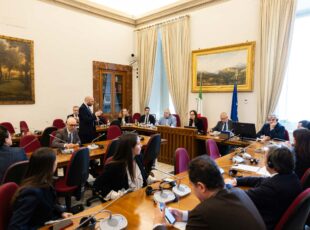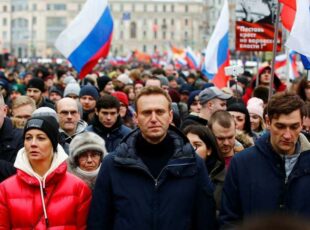Don’t subjugate Chechnya – renovate!

Mikhail Khodorkovsky
Russian policy in Chechnya will engender two dangerous adversaries. The first is the clan of Ramzan Kadyrov; the second is the Chechen people. Sooner or later, either the latter or the former will start a war against us. If we want to avoid this scenario, Russia must urgently change its policy vis-à-vis Chechnya.
Earlier this week, Open Russia released The Family, a film investigating life in Chechnya under Kadyrov’s leadership. This is a film that had to be made in order to expose people in Russia to a Chechnya that is worlds away from state television’s official presentation of the region. The myth of a reconstructed, flourishing Chechnya is just that – a myth. Granted, there are a handful of TV-friendly vistas: Putin Avenue, four empty skyscrapers in Grozny city, and a few others. But take a look at the republic at large and you’d never know that the war came to an end over a decade ago. Many buildings are still riddled with shell- and bullet holes. Indeed, our film unit captured footage of the hole-riddled interiors of buildings whose newly refurbished facades look out onto Grozny’s principal streets.
You might think that life in Chechnya is much the same as life in other Russian provinces: impoverished, encrusted in the filth of a roadless region; weighed down by the need to render tribute to various officials. But that’s not quite the case.
In other regions of Russia you might encounter a plethora of everyday problems, human rights violations, and unaccountable authorities. Even in this regard, however, Chechnya is in a league of it’s own. The belief that Chechnya isn’t truly part of Russia has become commonplace. The local population is still transfixed by fear; anyone can be abducted, beaten or killed. Human rights activists face enormous risks – their offices are torched and some are simply murdered. The penury and powerlessness of the population as a whole stands in stark contrast to the lavish lifestyles of the new elite, who spend gigantic sums on motorcades of luxury cars and family estates that ape the palaces of Arab sheikhs. The leader of a region where the level of subsidisation is 82% – and who receives an official salary of under $100,000 – has somehow become one of Russia’s most popular social figures. His lifestyle is incongruous with Article 20 of the UN Convention Against Corruption (concerning illicit enrichment), as should be all too evident for every single one of his million-odd Instagram followers.
A fallacious either-or
Pro-government politologists present us with a fallacious either-or: we either have a rigid, authoritarian, feudalistic system involving the de-facto rendering of tribute to the local mini-Tsar, or we have a new war in the Caucasus. The reality is different. In the long term, current policies will not bring about the stabilisation of the situation in Chechnya; rather, they will lead to the creation of two dangerous adversaries, and to an inevitable conflict with one of them. The first adversary is Kadyrov’s clan of siloviki who have grown accustomed to living off federal aid. As the years pass, the clan is only going to become more ravenous, while the resources of the federal budget – decimated by Crimea, sanctions, and the general decline of the economy – are only going to shrink. If the federal government attempts to assuage the clan’s appetites, it risks an overspill of siloviki-perpetrated outrages into other regions of Russia, from terrorist acts to the proliferation of extortion and racketeering in business. It’s painful to think that these people will be armed at the expense of Russian taxpayers.
The second adversary – also a product of our own making – is the population of Chechnya, beset by income inequality and the lack of human rights or any means of social mobility. Chechnya’s people can see that Russia is behind the regime constructed in Grozny, and it is Russia that they associate with the injustices being perpetrated in their republic. Which leaves little hope that Chechnya will voluntarily remain part of Russia when Kadyrov’s regime comes to an end. The “money-and-lack-of-control-in-return-for-loyalty” policy has another considerable drawback. We’re sending a very harmful signal to Chechnya’s youth, providing them with the exemplar of a thug rather than a workhorse. They realise that there’s no means of social mobility for them in today’s Chechnya, and that the only way of advancing in the world is to wage war before brokering deals with the federal centre. That’s exactly how Chechnya’s current leaders “achieved success” themselves.
A new policy
If we want to avoid this scenario, Russia needs a new policy and a new agreement with Chechnya. First, we have to acknowledge that the inhabitants of Chechnya are Russian citizens. Our government bears responsibility for the establishment in Chechnya of a system of power that’s dragging it back into the Middle Ages. It is our duty to bring their living standards to a level with those in Russia as a whole. We cannot betray a million Russian citizens who have found themselves under the yoke of a medieval mini-Tsar.
Second, it is in our interest to keep Chechnya within Russia. This will prevent the region from posing a constant threat to national security. A jettisoned Chechnya would become an export hub for Islamic fundamentalism and terrorism. Officials, business people and journalists who have recently visited the republic remark that, Islamification and authoritarianism notwithstanding, Chechnya has not changed all that much from a cultural standpoint over the last 25 years. Young people still have a good level of Russian, meaning that integration would come at a much lower cost than casting-off. It is not merely a question of money; it is, above all, a question of human lives.
Third, we must accept that the transition from medievalism back to a modern society will cost money, which must first and foremost be spent on the education and upbringing of children. Given the sluggishness of these processes, the transition will take some time to achieve.
Fourth, the system of mutual relations between federal centre and region must itself be revamped. There must be a shift of emphasis: cooperation with city authorities and municipalities must take precedence over any dealings with the leadership of the republic. These authorities must receive funds directly and commit them towards the creation of social programmes and employment instead of spending the money on hosting Hollywood stars or the formation of a personal guard. If they fail to fulfil their commitments, their funding should be cut off.
Self-governance
These rules must entail the equality of all before the law as well as a common, level playing field for all of Russia’s regions. The problem of Russia-Chechnya relations can be resolved only within the framework of a local development programme with self-governance. Whatever Chechnya needs, other Russian regions need as well. The majority of powers, together with control over revenue sources, should be transferred to local governments. Areas beyond the capabilities and resources of local or regional administrations should remain under central control: federal infrastructure, the army, the security agencies, foreign policy, inter-regional investigations of grievous crimes. Regional authorities should be organised according to parliamentary principles. The organisation of Chechen society is highly complex, and such a system would allow the interests of all groups to be accommodated in the best possible way.
Russia’s Chechen policy must make allowances for the region’s historical, cultural and religious idiosyncrasies. Chechnya should be granted autonomy with regard to issues of social and cultural policy, which would be in keeping with local traditions. Rules established by local authorities should be kept in check by the human rights laws enshrined in the Russian Constitution. You cannot force women to wear black veils as this represents gender discrimination outlawed by the Constitution. And Chechnya’s men must be forced to obey the Constitution; there can be no compromises in this regard.
Fifth, cultural and educational integration is of great importance. Funding should be linked in particular to the implementation of integration programmes. Schools and universities must offer a series of integration courses. Student exchanges should be encouraged; talented children from Chechnya should be given places in Russian universities; talented children, and not the children of the elite, as is the case today. Such an integration programme would bear fruit in 15-20 years.
The transition period must begin with the resignation of Ramzan Kadyrov, and fair elections to the regional parliament. Leadership of the armed forces should be transferred to a specially appointed North Caucasus Command. This won’t pose a major problem: the legitimacy of the Kadyrov clan is contingent on the federal mandate, and not vice versa, as Kadyrov-sponsored propaganda, financed by the Russian budget, would have us believe.
Finally, the most important thing of all: the problem of Chechnya can be resolved only within a free and open Russia. Only the liberation of Russia from the grip of a corrupt and archaic regime can kick-start the reforms required to transform the situation in Chechnya. But if Chechnya’s situation does not change, if this “black hole” of Russian statehood isn’t closed, a free and open Russia will never come into being.
The author is the founder of the Open Russia movement.
Read the original article in Vedomosti here.



